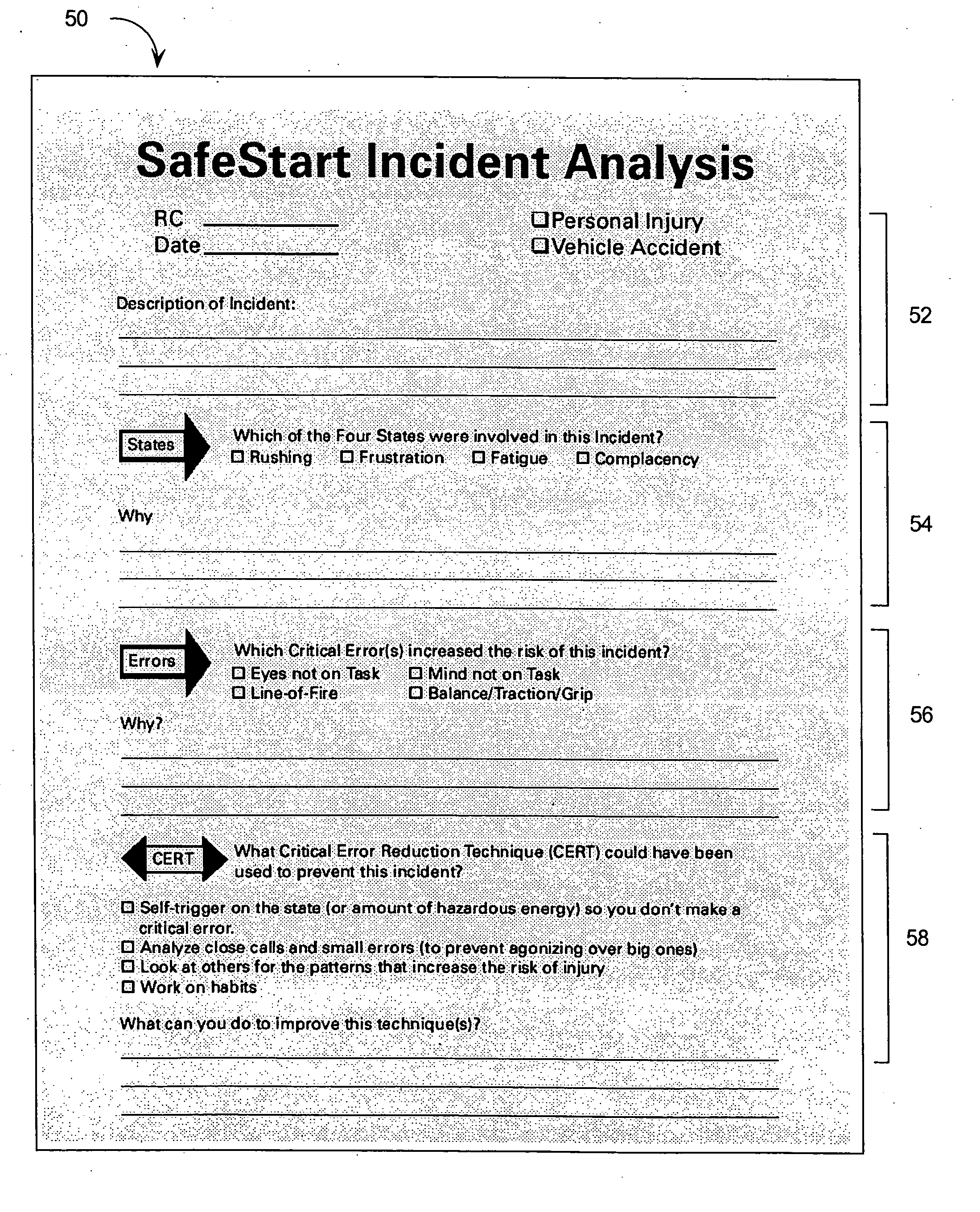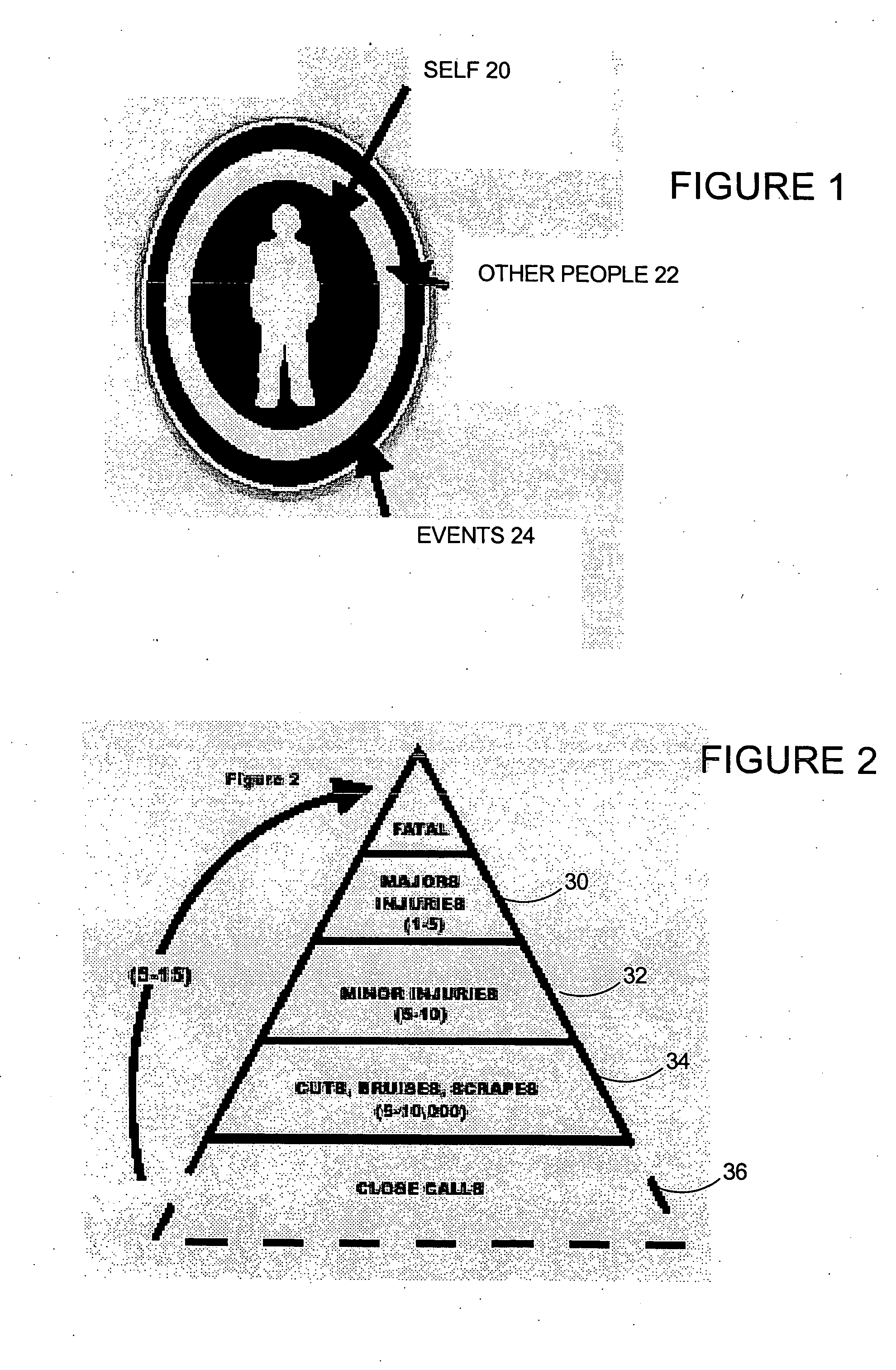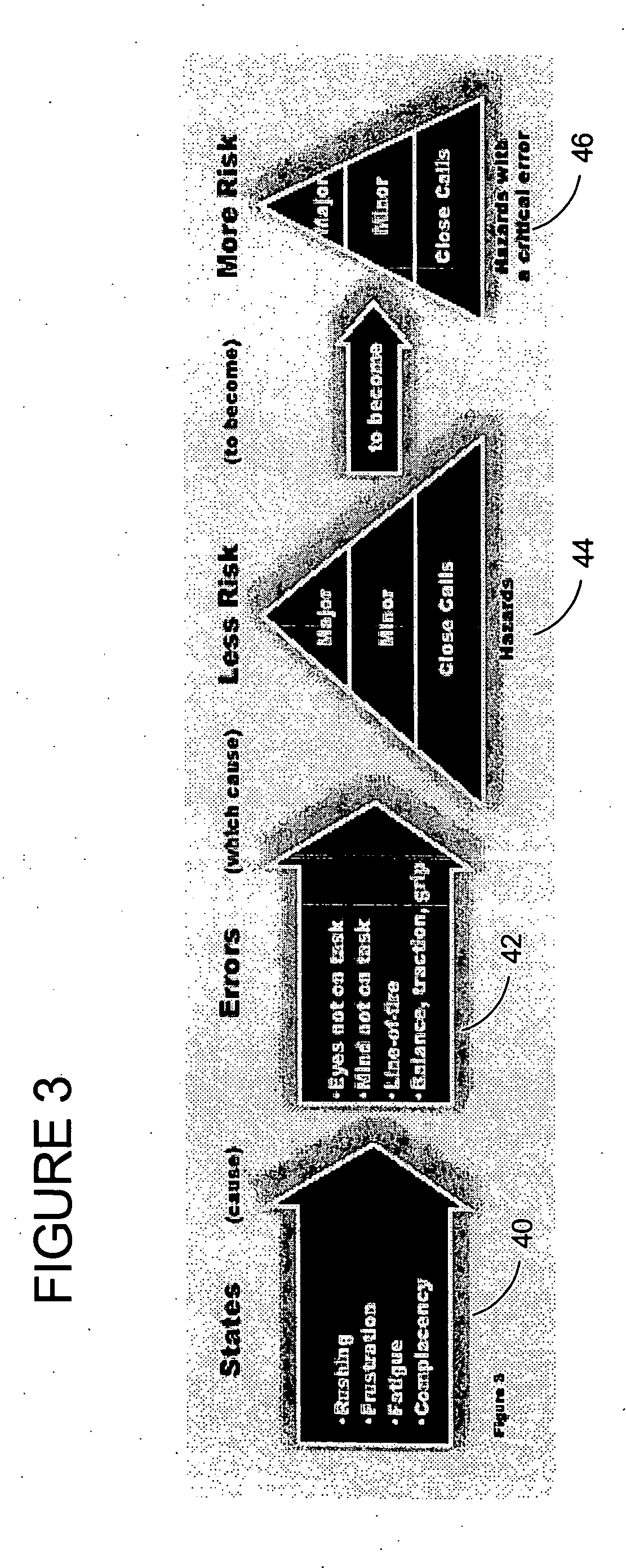Method and system for reducing accident occurrences
a technology of accident occurrence and accident prevention, applied in educational models, educational appliances, instruments, etc., can solve the problems of many systems and methodologies, low success rate of injuries, and low efficiency of injuries, so as to reduce the frequency of industrial accidents, and reduce the likelihood of accidents
- Summary
- Abstract
- Description
- Claims
- Application Information
AI Technical Summary
Benefits of technology
Problems solved by technology
Method used
Image
Examples
Embodiment Construction
[0048] The existing accident reduction techniques do not operate effectively for a number of reasons. To begin with, they do not use the correct causation model.
[0049] In order to have an incident you must have some form of hazardous energy and something unplanned or unexpected has to happen. In order to have an injury, you must have some hazardous energy, something unplanned or unexpected has to happen, and this hazardous energy has to come in contact with a person or the person has to contact it. The perspective or focus traditionally has been on the source of the hazardous energy and keeping that hazardous energy from contacting the person through engineering controls, rules, procedures and personal protective equipment. However, there are limits to what can be achieved with rules, procedures, personal protective equipment, and engineering controls.
[0050] The invention considers the source of something unexpected happening. There are only three sources of the unexpected as show...
PUM
 Login to View More
Login to View More Abstract
Description
Claims
Application Information
 Login to View More
Login to View More - R&D
- Intellectual Property
- Life Sciences
- Materials
- Tech Scout
- Unparalleled Data Quality
- Higher Quality Content
- 60% Fewer Hallucinations
Browse by: Latest US Patents, China's latest patents, Technical Efficacy Thesaurus, Application Domain, Technology Topic, Popular Technical Reports.
© 2025 PatSnap. All rights reserved.Legal|Privacy policy|Modern Slavery Act Transparency Statement|Sitemap|About US| Contact US: help@patsnap.com



